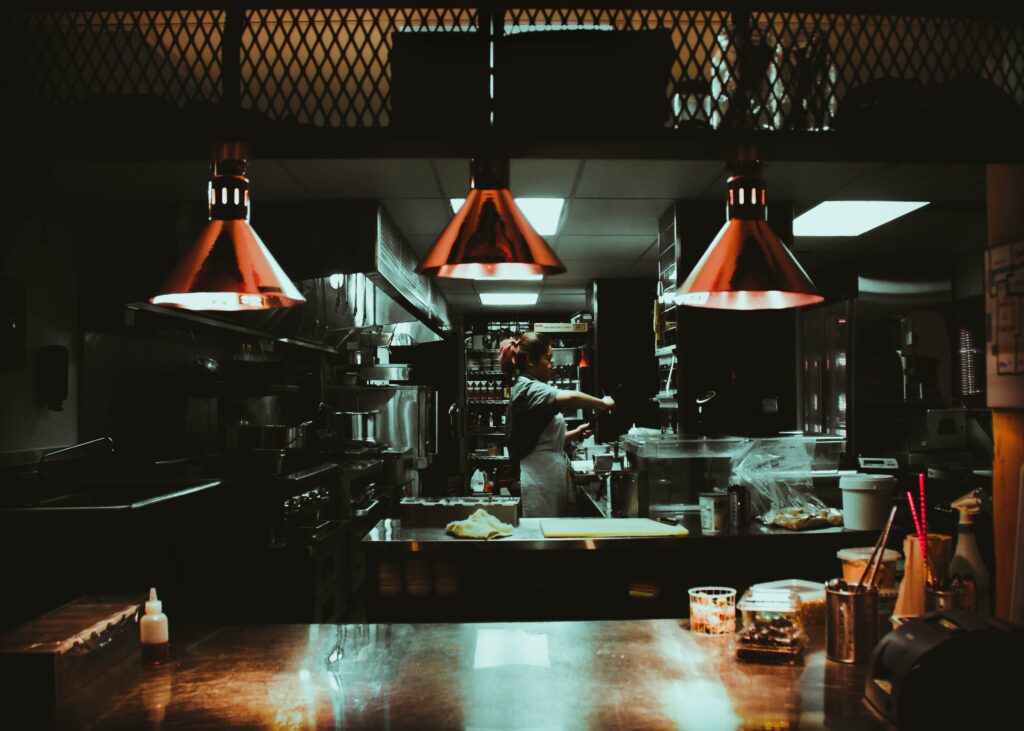In the fast-paced world of cloud kitchens, efficiency is paramount. As operators strive to meet the ever-growing demand for quick, high-quality food delivery, automation technologies have emerged as a powerful tool to streamline processes, reduce manual labor, and optimize resource utilization. By leveraging automation, cloud kitchen operators can enhance their operations, drive profitability, and deliver exceptional customer experiences. This article will explore three key aspects of cloud kitchen automation and provide valuable insights and practical guidance for operators looking to maximize efficiency.
Topic 1: Streamlining Order Management
Efficient order management is a critical component in enhancing cloud kitchen operations. By incorporating automated order-taking systems, synchronizing with online platforms, and implementing order routing mechanisms, operators can significantly reduce errors, decrease order processing time, and boost overall customer satisfaction.
One notable example of automation in order management is the adoption of kitchen display systems (KDS), which replace conventional paper tickets with digital screens. These systems can intelligently prioritize orders based on factors such as preparation time and delivery distance, ensuring optimal efficiency in order completion. A case study conducted by Toast, a restaurant management platform, revealed that implementing a KDS led to a 25% reduction in ticket times and a 7% increase in sales for a particular restaurant[^1^].
Seamless integration with online ordering platforms is another crucial aspect of optimizing order management. By establishing direct connections with popular platforms like Uber Eats, Grubhub, and DoorDash, cloud kitchens can receive orders in real-time, thereby eliminating the need for manual input and minimizing the likelihood of errors. Research by SevenRooms demonstrated that restaurants that integrated their point-of-sale (POS) systems with online ordering platforms experienced a 16% increase in order volume and a 20% increase in average order value.
In addition to these examples, automating order management can also help cloud kitchens better manage peak times and reduce order cancellations. A case study by POSist, a cloud-based restaurant technology platform, showed that a cloud kitchen using their automated order management system experienced a 35% reduction in order cancellations and a 20% increase in order accuracy. This further highlights the potential benefits of automation in streamlining order management processes in cloud kitchens.
Topic 2: Optimizing Inventory and Supply Chain
Effective inventory management and supply chain processes are crucial for cloud kitchen operators to reduce waste, manage costs, and guarantee ingredient availability. Automation technologies, including intelligent inventory tracking systems, automated stock replenishment mechanisms, and data-driven forecasting tools, can substantially enhance these processes.
Intelligent inventory tracking systems can monitor stock levels in real-time, offering operators precise information on ingredient availability and consumption patterns. This data can be utilized to automate stock replenishment, ensuring ingredients are ordered as required and minimizing the risk of stockouts or surplus inventory. A study conducted by Truffle Systems discovered that cloud kitchens employing their inventory management software experienced a 30% reduction in food waste and an average savings of 4% on food costs1.
Data-driven forecasting tools can further assist operators in optimizing their supply chain by anticipating demand patterns and adjusting orders accordingly. By examining historical sales data, weather patterns, and other factors, these tools can produce accurate demand forecasts, empowering operators to make well-informed decisions about ingredient orders and minimize waste. A case study by BlueCart, a supply chain management platform, revealed that restaurants utilizing their forecasting tools decreased food waste by 50% and saved an average of 8% on food costs.
In addition to these benefits, cloud-based inventory management systems can help reduce labor costs and improve recipe standardization. A POSist report found that implementing a cloud-based inventory management system can significantly reduce labor costs and enhance recipe consistency by setting standard processes for all recipes3. This further emphasizes the potential advantages of automation in optimizing inventory management and supply chain processes in cloud kitchens.
Topic 3: Enhancing Production and Kitchen Workflow
Automation can play a significant role in improving production processes and kitchen workflow in cloud kitchens. By implementing kitchen display systems, automated food preparation equipment, and robotics, operators can increase production capacity, reduce preparation time, and enhance overall efficiency.
Kitchen display systems, as mentioned earlier, can help streamline kitchen workflow by prioritizing orders and providing real-time updates on order status. This allows kitchen staff to work more efficiently and reduces the risk of errors or delays in order fulfillment.
Automated food preparation equipment, such as robotic cooking systems and automated slicing machines, can also improve efficiency by reducing manual labor and ensuring consistent food quality. For example, Miso Robotics’ Flippy, a robotic kitchen assistant, can autonomously cook burgers, fries, and other menu items, reducing the need for human intervention and increasing production capacity.
Concluding Paragraph
In conclusion, cloud kitchen automation offers numerous benefits for operators looking to maximise efficiency and drive profitability. By streamlining order management, optimizing inventory and supply chain processes, and enhancing production and kitchen workflow, automation technologies can transform operations and deliver exceptional customer experiences. As the cloud kitchen industry continues to evolve, operators who embrace automation will be well-positioned to stay ahead of the competition and capitalize on the growing demand for fast, high-quality food delivery.
Research Sources:





